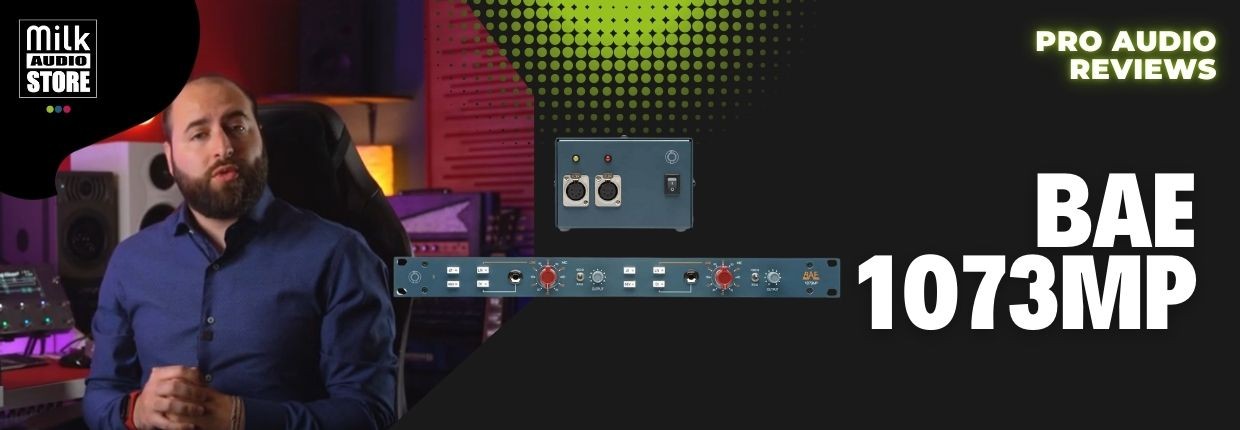Recording, Mixing and Mastering
Published on 11/09/2024

Today we introduce the BAE 1073 MPmicrophone preamplifier . A two-channel version, based on the Neve 1073 DPA, the BAE 1073 brings back the same clean design with red main preamp gain knob, output volume, phantom power capability, phase inversion, high impedance line or DI source, and microphone impedance switch.
This version has no internal power supply in fact the power supply is external and has the ability to power 2 units simultaneously. It is definitely a very high quality power supply, with the advantage that it can be placed far from the circuitry avoiding possible interference.
A key feature is the ability to choose the impedance of the microphone preamplifier between 300 Ohms or 1200 Ohms with the small but handy switch.
As we have already explained many times, but it is good to remember, the general rule is to choose the impedance of the machine based on the output impedance of your microphone so that there is a 10 to 1 ratio. For example, with a 200 Ohm microphone, we will choose something in the range of 2k Ohms.
Obviously this is a rule of thumb nothing prevents you from experimenting, in fact I encourage you to do so as you may hear even positive differences depending on the microphone you use.
For our audio test we used an SE Electronics Gemini G5 with a FET setting, a microphone with quite a high output volume, where we immediately hear the difference between the two impedances.
What stands out upon listening is a jump in volume, as impedance is closely correlated with output volume so it may be difficult to make an immediate comparison.
Obviously, the differences depend on the microphone you use perhaps some times you have a more emphasized change other times less; you may perceive a warmer recording or swollen on the low end or clearer, many factors are at play.
The advantage of using a dedicatedexternal mic preamp instead of the internal preamps on sound cards is that you can pull the gain making the preamp work hard, but thanks to the output knob you can preserve the output volume and not clip. In this way we give warmth and color to the signal itself.
If we go on to hear the main sound of the BAE 1073 MP, acting on the preampgain from 20db up to 60db, we will hear that the signal will color by adding harmonics until it distorts completely.
In our audio test we obviously went to the extreme to understand the potential of the machine. The microphone used definitely did not need to be pushed that hard as it has a high output already, but it can also be interesting to create distortion for a stylistic choice.
In any case, the distortion obtained is purely analog distortion; there was no digital clipping.
The high gain that goes up to 70db is certainly useful for microphones with very low output, such as old ribbon microphones or the newer Shure SM7b, to give an example, but also with the Lauten Audio LS208 that requires a minimum of 50/60 dB.
We conclude by mentioning that the output knob should be left on the maximum output level position and consequently turn up the preamp gain; this way you have the maximum signal-to-noise ratio.
Obviously, if you want to be creative and color the signal more you will necessarily have to turn the output volume down.
Join us today and get 5% off your next order!

Empty cart